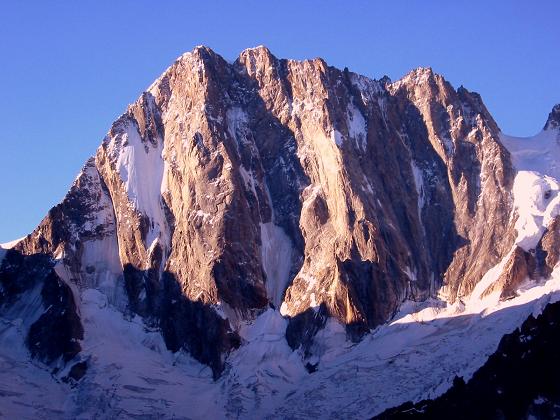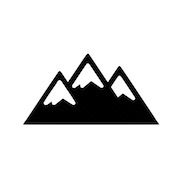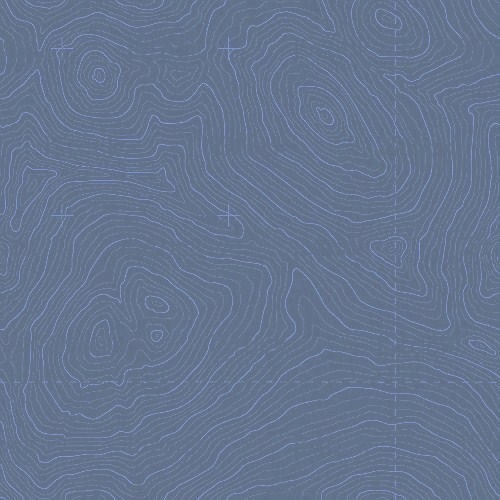Grandes
Jorasses 4208m  
Ascents by Walker Spur
or Normal Route, 2022 |
|
|
|
|
|
|
 |
|
PHOTO:
Sunset on the north face of the Grandes Jorasses. Photo:
Benoit, Icicle Guide |
|
FEEDBACK: "To be the only company to offer
this route is one thing, but to
deliver it is quite another! Many many thanks" Connor F, Dublin |
|
| Course
Overview |
 |
There
are six classic north faces in the Alps; the Dru,
Matterhorn, Eiger, Piz Badille, Tre Cima de Laverado,
and the Grandes Jorasses. The finest climb of the
six is the Grandes Jorasses due to the quality of
the rock, the stature of the mountain, the location,
and the amazing line that the classic route up the
North Face (the Walker Spur) takes. The route leads
directly up the huge left hand buttress of the North
Face, to reach the highest point on the mountain,
Pointe Walker. The main attraction of this route
is that the conditions vary so much even in the
same season. |
 |
The
summer see ascents at the start of the season in
B3's and crampons, and in the middle of the heatwave
ascents wearing just rock shoes all the way from
the Bergschrund to the summit, taking just one day
to complete the whole route. The course is designed
to enable a strong Alpinist to develop their climbing
relationship with their Guide over a week, in order
to enable them to attempt the route in style, making
a quick and efficent ascent to the summit. The descent
route is over onto the Italian side, and back through
the road tunnel to Chamonix. |
 |
The
kind of climber which this course should appeal
to, will probably have already ascended some serious
Alpine routes on their own without a Guide, such
as the traverse of the Lion (Italian) Ridge of the
Matterhorn, the normal route on the Dru, or the
Aiguille Verte. For
this level course we expect you to be very competant
on Alpine D+ / TD grade routes, Scottish Grade IV
Ice, and at least UK rock at E2 traditional outdoors. The
Walker Spur is a huge route, and you must prepare
suitably for it. |
 |
Unlike
any of the other courses, there is no point in
attempting to set out an outline itinerary, as
the course has to be developed for your precise
requirements, and to take account of the likely
weather. As this is such a major route, we suggest
that you consider taking two weeks off, so that
you can get out to Chamonix to train and acclimatise
thoroughly before the Guiding. In this way the
date that the Guiding starts can be quite flexible,
to allow for a suitable weather window. This will
maximise your chances of success, and will ensure
that you don't waste the valuable Guiding days
getting climbing fit for the ascent. These days
really should be fine tuning, in final preparation
for your climb. |
 |
So
that you get an idea of what the likely format of
the course would be, you should allow at least three
days for the Walker Spur itself. One day will be
used to approach the Leschaux hut at the foot of
the Grandes Jorasses. The second day will be taken
by the ascent itself from the bergschrund to either
a bivouac near the summit block, or even over the
summit in the Italian hut. The third day will be
taken completing the route and descending the mountain
to return to Chamonix. As this shows, there are
two days for training with the Guide in preparation
for the route. |
 |
Dates: Run on demand from
June through to August. For current availability
on this course click
here. |
|

Course
Photo Gallery
|
|

Walker
Spur route description |
| The
route starts from the Leschaux hut, and there is
a hard slog up the glacier to the bergschrund of
the Leschaux glacier, where it separates from the
North Face. This rimaye is often difficult to cross,
and often you have to abseil into it and climb out
on the often overhanging top side, but once on the
far side (at about 3000m) you reach the first rocks
at the bottom of the spur. If you turn these rocks
slightly to the right, then after a pitch of quite
steep mixed climbing, you see a ramp of snow leading
across to the left. The route follows this ramp
across a line of weakness in the buttress, for another
pitch until you are below the main buttress. The
first feature is the 30m diedre (corner), which
is quite blocky, with a roof on the left hand side.
From the roof the route heads to the right for several
rope lengths on slightly easier, though often mixed
ground. Above this there are some snowy sections
before you gain the crest of the spur, where the
rock is very broken (and often loose), as you ascend
towards the 75m diedre, which is about level with
the base of the main icefield of the Shroud. The
rock on the whole route is fairly sustained at IV
and V, though the hardest section involves a few
moves of VI, and the corner is usually very wet.
At the top of the corner, the route turns into steep
angles slabs, and finally a short chimney. Above
you are some overhangs, which to get around you
traverse to the right, and then make a short tension
traverse abseil of about 10m to reach the base of
a steep chimney. This abseil marks the halfway point
of the route, and you are at the foot of the Grey
Tower. At this stage you are approximately half
way up the route, and the next stage is to climb
up the tower. The steep chimney must be climbed,
and then as you ascend the angle eases off slightly,
until you reach a large block and some very steep
dark coloured slabs, called the Black Slabs. The
next section involves some quite difficult route
finding as you follow crack systems upwards until
you reach a slightly overhanging groove leading
upwards. This is climbed until you reach a small
ledge. From here you ascend some quite broken grey
slabs to reach the right hand side of the main spur.
The needle of the Grey Tower is on your left, and
as you climb, you reach mixed ground, and a small
hanging icefield, called the Triangular Névé.
Above is the final large tower, which is slightly
red in colour. The best way up this summit block
is to traverse to the right on small holds, until
you reach an area of cracks and chimneys leading
upwards, which are red coloured. The rocks is quite
shattered at this height, and eventually the route
is barred by an overhanging buttress. Another difficult
traverse leads to the right again, and you find
a couloir. Once you are established in the couloir,
this ascends to the left, almost behind the steep
buttress, for a few pitches. Ahead you can see the
shoulder of the summit block. Once this has been
reached you are two pitches from the summit itself,
and crampons are usually needed as you have to break
through the cornice to finish the route, and reach
the summit of the Grandes Jorasses at Pointe Walker
at 4208m. |
 |
 |
 |
| Course
Prices |
 |
Walker
Spur |
5
days guiding, 7 days holiday in total |
£5250 |
Normal
Route |
5
days guiding, 7 days holiday in total |
£3000 |
|
Secure
online booking system |
|
 |
| Standard
Course Inclusions: 1) IFMGA Mountain
Guide for five days, 2) Chamonix course hosts for
logistics & briefings, 3) Self-catered accommodation
in Chamonix (inc. beddings & towels), 4) Pre
course information booklet, 5) Equipment discount
voucher for UK shops, 6) Free 36 page technical
Course Instruction Booklet, 7) Road transport in
Chamonix valley, 8) One night half board in mountain
hut (inc. costs for guides), 9) Evening technical
instruction on nights in Chamonix. |
 |
| Exclusions:
1) Travel to and from Chamonix, 2) Equipment hire,
3) Personal laundry, telephone calls, lunches, evening
meals in valley, & any purchases in mountain
huts / hotels / restaurants, 4) Cable cars and uplift
for you and your guide (cable cars for guide included
in Chamonix), 5) Transport / tunnel ticket outside
the Chamonix valley, 6) Activities insurance, &
excess baggage charges. |
 |
 |
Course
upgrade options
Many clients on this
trip consider upgrading with one or more of
the following course additions... |
|
 |
 |
| |
 |
 |
Private
room |
|
 |
 |
Big
5 Alpine
extensions |
|
 |
 |
Technical
kit rental |
|
 |
 |
Acclimatise
weekend |
|
 |
 |
 |
 |
 |
| |
Upgrade
to single from
£300-£500 in addition to
standard course price,
depending on week. |
Extend by 2 days after
to ascend one of the
Big 5 Alpine peaks as
an extra summit. |
Rent all technical kit
for a week. Full Alpine
Bundle costs you just
£100 for the week. |
Saturday
night spent in
Chamonix, with choice
of self-guided or guided
on Sunday. From £70. |
| |
Click
for details |
Click
for details |
Click
for details |
Click
for details |
| |

Standard
course accommodation - normally clients are based
in self-catered flats (details),
so take a look, and decide if it's for you. For
more luxury, contact us for quotes in higher standard
apartments, or hotels of any standard required.
If you have / source your own course accommodation,
or we cannot provide an upgrade, the standard course
price has a £100pp reduction applied on your
invoice. |
|
|
|
 |
| Normal Route itinerary |
 |
 |
This is an outline itinerary, and just an idea of what you could do during the week, for an attempt on the normal route, allowing a spare day for weather and conditions flexibility.

Sun - Travel to Chamonix, briefings, kit checks, and night in town.

Mon - Cable car to Helbronner, and the traverse of Aiguilles d'Entreves, or Tour Ronde, followed by the night in the Rifugio Torino to acclimatise.

Tue - Early start to climb Dent du Geant, with the abseil down, and return to the Skyway cable car to descend. Drive back to Chamonix for the night.

Wed - Drive through Mont Blanc tunnel, and turn left into the Italian Val Ferret, to park at Planpincieux 1600m. The ascent to the Boccalatte-Piolti hutascends through the forests, then a grassy slope. It reaches a rocky section below the Planpincieux glacier, which steepens with Grade II scrambling. There's a metal ladder at c.2300m across a chimney, then the trail follows the moraine up the right side of the Planpincieux glacier. Above is a rock step on which the hut is located, accessed via some fixed ropes.

Thur - Alpine start to cross the rock step above, to reach the glacier. Climb snow slope "La Bouteille" to base of Rocher du Reposoir 3400m, and climb it II / III to the top. Traverse right across Whymper Couloir, where often there's a fixed rope. On the far side you reach a spur, and have two choices;

a) Climb the supr until you reach the upper glacier, then cross it to the right to a mixed slope below Point Walker. Ascend this to the summit.

b) Climb the whole Rocher Whymper, grade III, and then traverse the summit ridge to Pointe Walker.

Safety wise option 'a' is easier, but only after a good re-freeze, and it's threatened by seracs above. Route 'b' is technically harder, but safer, and it's the most common summer route. The Whymper couloir is best crossed before 10am or after sunset, due to SW aspect taking the sun.

Timing wise, allow at least 6hrs from Boccalette hut to the summit, and 4+hrs for the return. Sometimes longer. If so, the descent to the valley is probably best done on the next day.

Fri - Contingency day for descent, and return to Chamoix for the night.

Sat - Check out and return home. |
 |
| Follow our latest news |
 |
 |
|
|
 |
| Any
further questions? |
 |
 |
A
key part of choosing a company is being able to come and
talk about your plans with an experienced course advisor
face to face. In an increasingly virtual world, we know
our clients value speaking to real people, getting open
and honest advice. The vast majority of our clients are
British, and our office and outdoor store is based in
Windermere in the English Lake District.

 

Get
in contact to arrange a meeting, and come in for a coffee
to discuss your course in person with a trip
advisor. |
|

